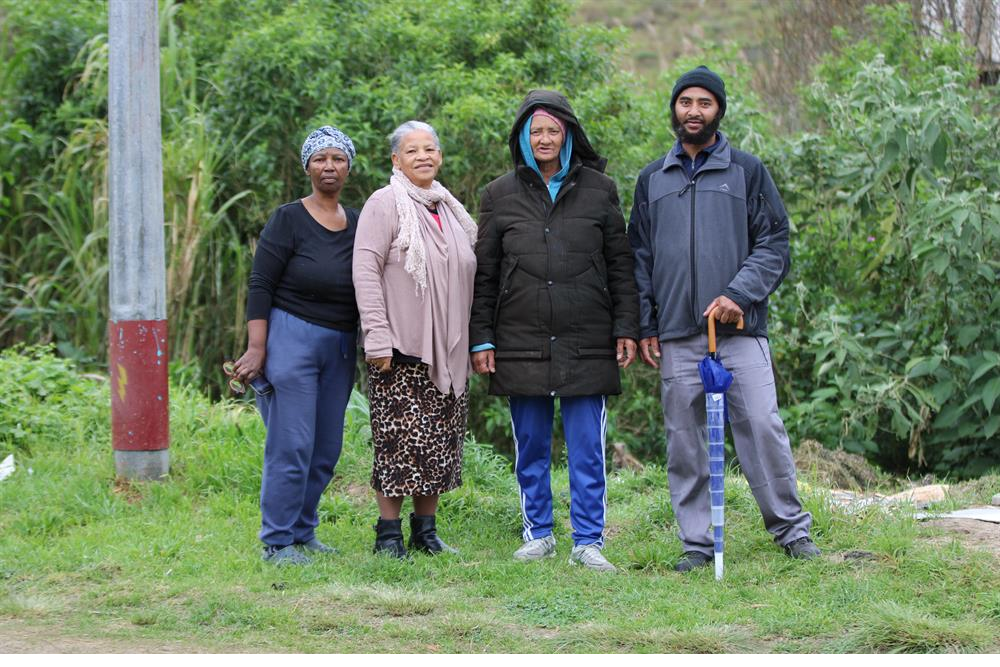KNYSNA NEWS - A large sewerage manhole overflowing strongly in Hornlee, ward 11, Knysna, together with nearby overflowing sewerage manholes, are having a devastating impact on residents and polluting the Knysna Estuary.
A stream running below the home of Brenda Williams (59), 997 Callander Street, is to a considerable degree made up of sewage, from sewage from manholes running down one side of the street and entering it via a drain under the street, and sewage from the large manhole, adjacent to the stream.
The stream joins others and sewage eventually reaches the estuary.
A distraught Williams said the large manhole, about 15 metres from her back garden, had been spewing sewage into the stream for years, "and when the rains come it gets worse".
The stench from the stream pervades her home, that of her neighbour, pensioner Rachel Oktober, 977 Callander Street, and homes in the vicinity.
Children
Daily, many children and adults cross the foul stream on partly submerged planks, next to the large, overflowing manhole.
Some of the children live across the stream from Williams' home, and cross it to go to school and return home, and other children cross it repeatedly to play in an open area.
Williams said a study had indicated that the soil in her garden was contaminated, and she was no longer able to grow vegetables.
"I've got three grandchildren here (living with her), Andrea, 12, Ashwell, 16, and I've got my little one, turning six this year, Leiwin. They are sick because of this stench - it makes you sick. I've got a sore throat. It stinks inside your house."
 (From left) Hornlee residents Brenda Williams, Rachel Oktober, Nolene Petersen and Vernol Pegram, who say their pleas for a municipal intervention to end the sewage crisis have gone unheard.
(From left) Hornlee residents Brenda Williams, Rachel Oktober, Nolene Petersen and Vernol Pegram, who say their pleas for a municipal intervention to end the sewage crisis have gone unheard.
Infection
A water management company said a "common bacterial infection related to sewage exposure is E.coli, which can develop into the fatal haemolytic uremic syndrome, eventually turning into kidney failure or even death if it's not addressed properly".
Williams said: "They've (municipal officials) come here - they stand here (near the large overflowing manhole) and say, 'This is bad, we are going to send somebody', then municipality staff come and see how bad it is - then they say they are going to send bigger (suction) trucks, but the trucks never come.
"I want a permanent solution to this, because that's what the municipality promised us over the years.
"No one takes us in Hornlee seriously, so we sit with this."
Maintenance
Russell Arends, the (ANC) councillor for ward 11, said in Hornlee, "informal dwellings are contributing to the (sewage) problem", and "then we must deal with the only (suction) truck the service provider has - maintenance needs to be done".
In addition, "water runs into the sewerage lines and that is not supposed to happen".
On Friday 12 July, he was, with members of the infrastructure directorate, to attend a council meeting concerning the section 154 (of the Constitution) preventative steps imposed on Knysna municipality prior to it possibly being placed under administration - "to see how far we are with complying with it". Arends said the municipality needed "to get money from the government, to apply for it, to rectify what needs to be rectified".
Councillor Mark Willemse (KIM), the chairperson of the Knysna Estuary Pollution Committee, said "as far as the committee is
concerned every bit of effluent that flows into the lagoon has dire consequences for the ecological health of the estuary".
He had been informed that roots had grown into sewerage lines in Hornlee. "Maintenance has been lacking by and large through all the infrastructure issues in Knysna," he said.
After asking the municipality for a response on the large amount of sewage entering the stream and its social impact, acting municipal manager, Phaahle Simon Malepeng, said: "Our plumbing department is attending to the problem; however, accessibility challenges are impacting the repair process."
‘We bring you the latest Garden Route, Hessequa, Karoo news’
















